| Uncle Al's Pictorial Pearls of Wisdom from the Ontarios - 1 a potpourri of educational items suggested by the photos |
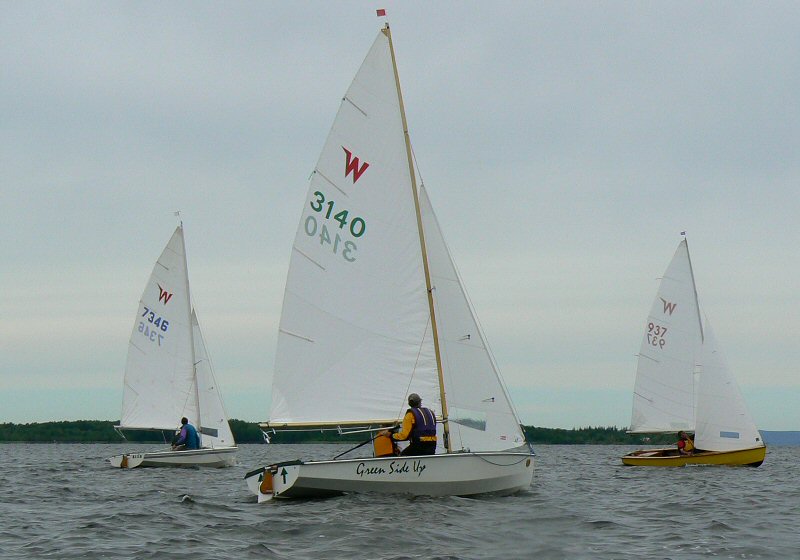 |
| Alan (7346) looks a bit
undersheeted on his main here, and is pointing accordingly. ... |
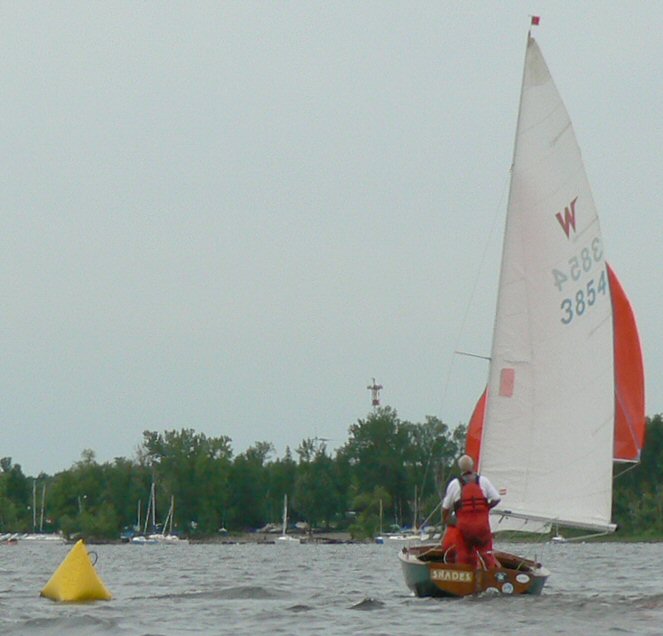 |
|
Al does not cut the mark
very close here, but with Bill a few lengths back,
...Al's main concern is to keep the main and jib pulling their best while ... |
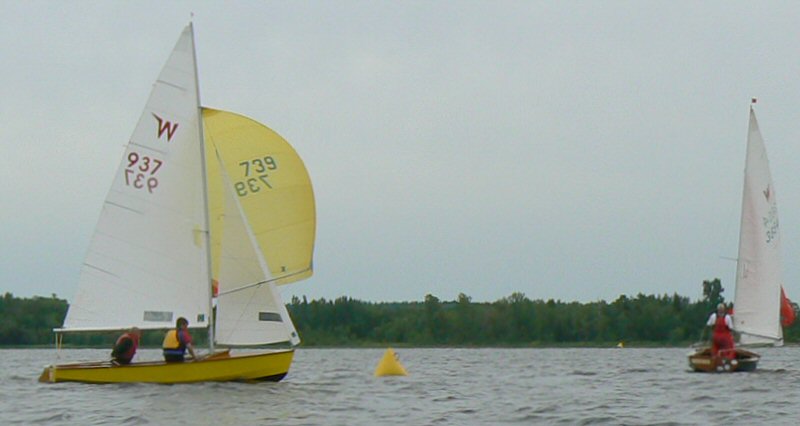 |
| ... Marc gets the spinnaker
flying for reach #2. ... |
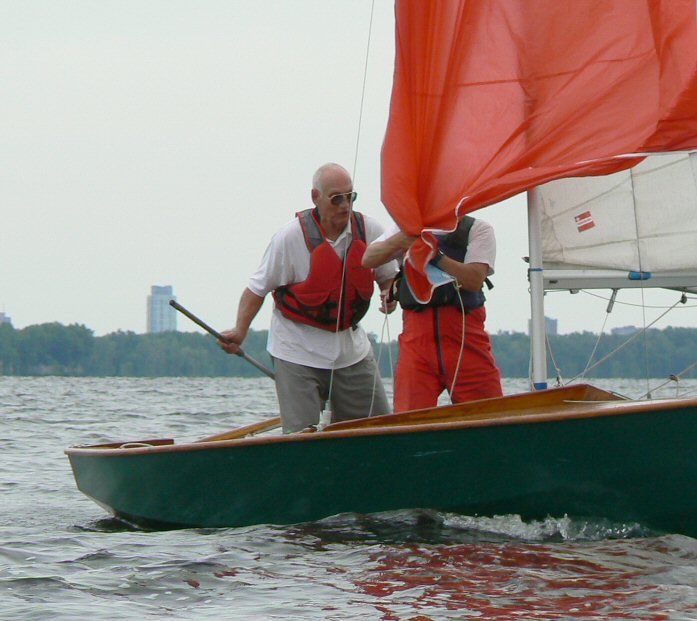 |
|
Near the leeward mark:
Marc starts to pull the spinnaker halyard through Al's slightly
clenched hand. If Al just lets the halyard go, the spi could fall under
the boat. Note how Marc also pulls the foot around to keep the leeward
sheet from falling into the water and going under the bow. It takes
fine judgment to time this manoeuvre so that just enough time remains
at the end to ...
... ... |
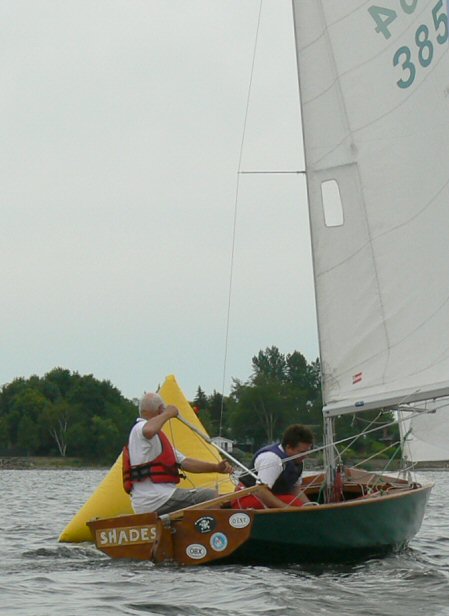 |
| ... gybe the boat and ... ... |
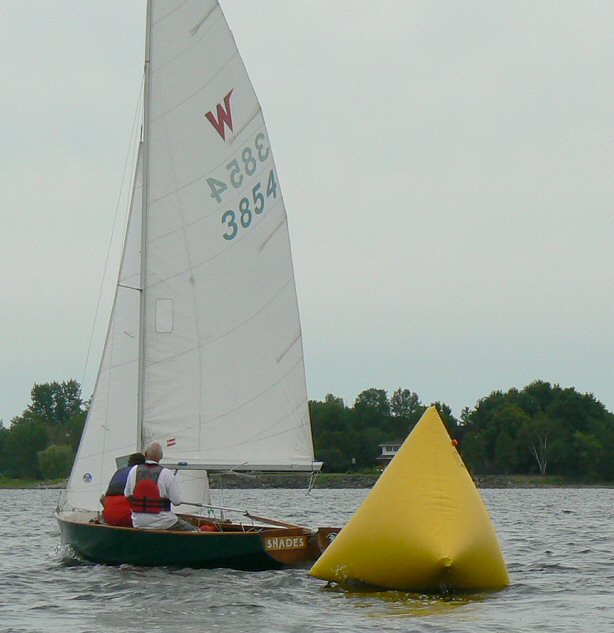 |
|
... round the mark nice
and close. The wide rounding Al did at the gybe mark cost little or
nothing by way of distance sailed, but here, a close rounding is a
must. Note how quickly Al's main has gone from being all the way out in
the previous picture to perfect beating position. That's because Marc,
as soon as he has the jib sheeted almost to close-hauled (and cleated
there), reaches in and grabs the mainsheet and brings it in hand over
hand to closehauled before giving it back to me. A person with one hand
on the tiller and trying not to hit the mark, simply can't bring the
main in anywhere near fast enough!
... |
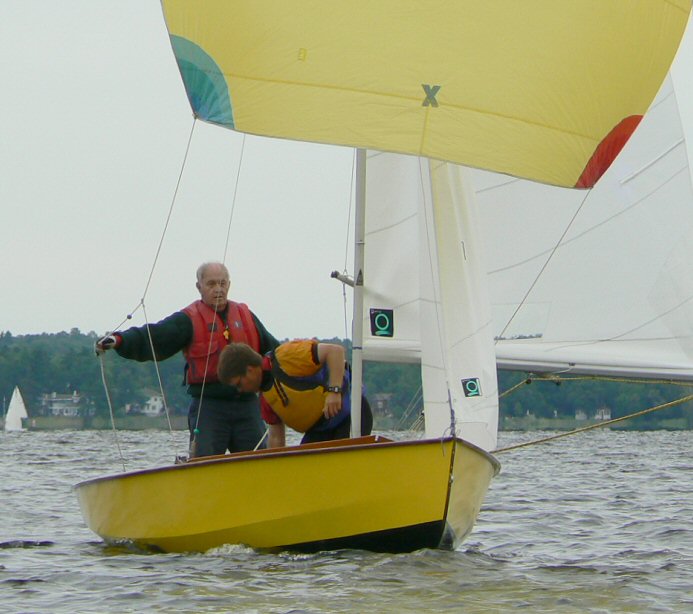 |
|
Anatomy of a spinnaker
take-down: Note how Frank has removed and stowed the pole early. This
is easily done on a run where Bill, the helm, can stand and keep flying
the spinnaker while the crew stows the pole. In this situation, it is
especially important to have the pole down and stowed before the
take-down and gybe. Apart from the obvious reason that a pole left up
gets in the way of the take-down, the pole will also deform the jib
when it is sheeted in to closehauled after the gybe.
... |
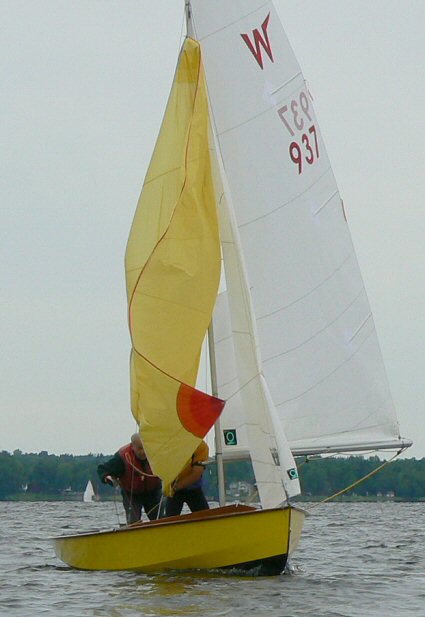 |
| Again, note how Frank
gathers the foot of the spi to keep the sheet from going under the
boat. Here, Bill and Frank have either left the take-down a bit late or ... ... |
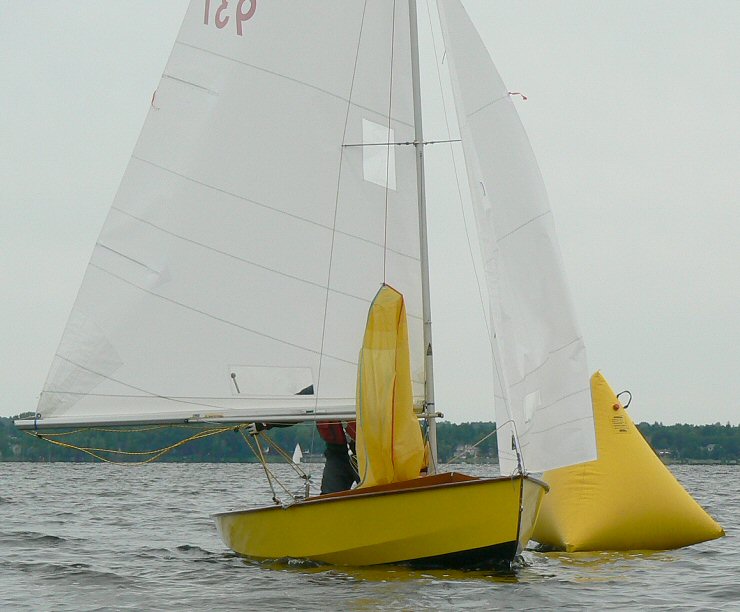 |
|
... the halyard has
snagged. I find it very useful to uncleat and then put my halyard hand
as far up in the air as I can. This gives me instant and early
feed-back about any snags in the line, and in fact tends to get rid of
the latter. Ideally of course, one remembers the halyard early enough
to check for and remove any tangles a minute or so before the intended
take-down. But using the hand-up techniques is a good alternative for
the many times that I forget to prepare my halyard. Above, Bill has had
to gybe before Frank can get the last of the spi stowed and everything
will now be a bit of a rush.
... |
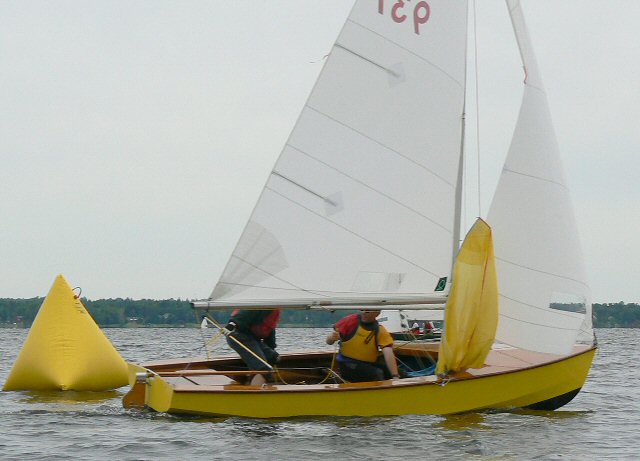 |
|
A fine rounding
recovery, all things considered. I think Frank must have sheeted the
main in for Bill, so now Frank can turn his attention to the jib which
still appears sheeted to windward? And then of course, the rest of the
spi needs to be stowed before the whole thing blows out to leeward and
becomes a sea anchor!
... |
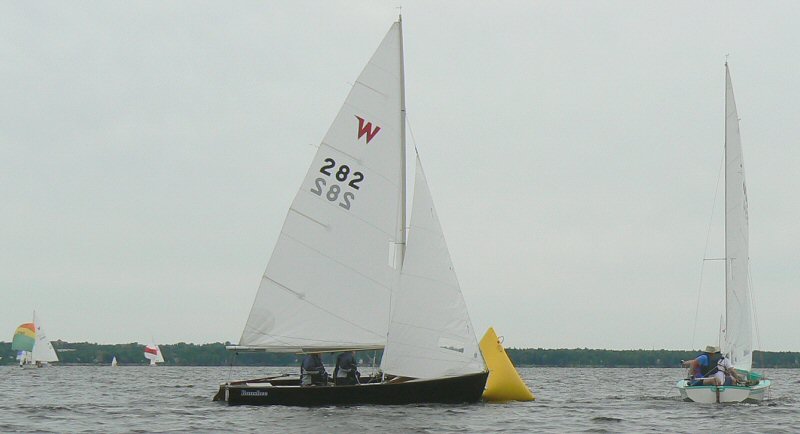 |
|
Dave is losing a lot of
power by (over)trimming his sails this early. Note how Jamie's sails
are trimmed the same as Dave's but the latter is sailing 90° lower.
That trim looks good but appearances are deceiving. Dave is seriously
stalling his sails and would be better off being undertrimmed even
though that feels and sounds worse. Dave will come out of this turn
slower than he needs to. He should use the Marc system and let Carol
get the main most of the way in hand over hand.
... |
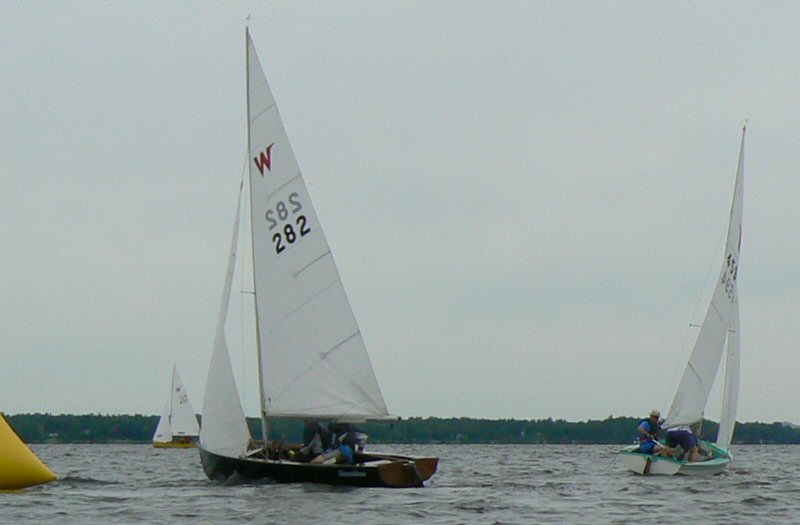 |
| That extra speed around the
mark would have been especially handy, given Dave's (wise) intention to tack as soon as possible after the mark. ... |
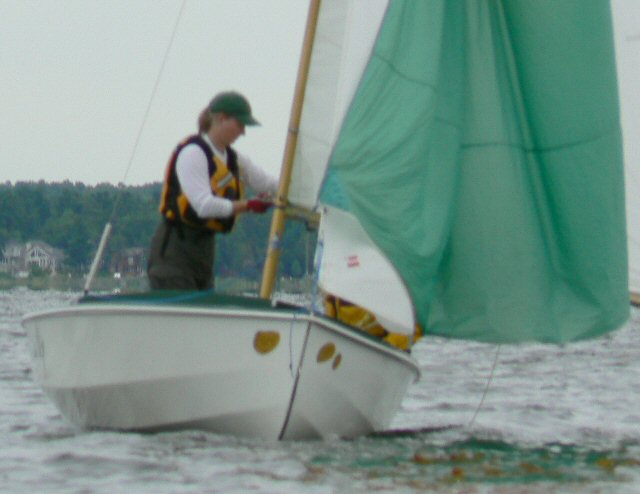 |
| Eeeek! A leeward douse! It
may be nice to have the spinnaker end up on the port side where it
started, but a douse to leeward is far more trouble than it's worth and in more of a breeze can be downright risky unlike on keelboats! ... |
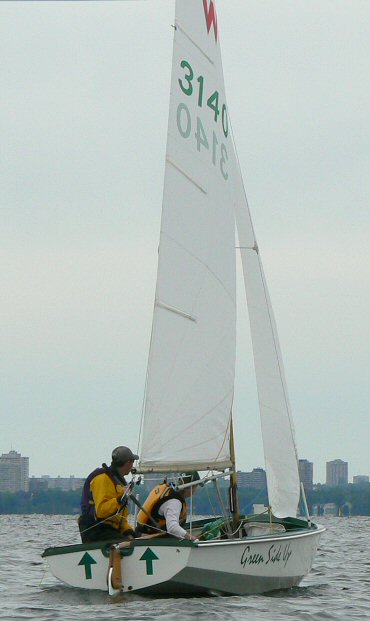 |
| Luffing up a bit above closehauled right
after rounding can be worth it if you need to pinch off a boat right
behind you. But that was not necessary here. Also, there is no big rush
to
sheet in tight until you get your boat settled away to max upwind speed. ... |
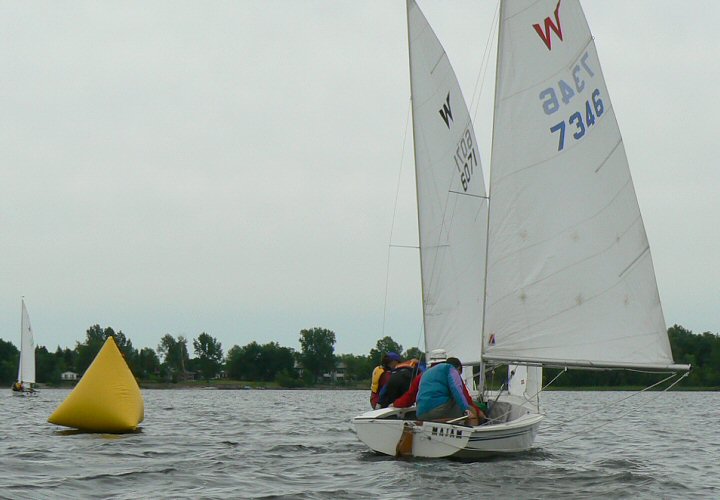 |
| This is a good place to
"slow down and win" as Stuart Walker says. By staying astern of Robin
until both boats are clear of the mark, Alan (7346) retains the option
to pinch up (as he is starting to do - note rudder angle) or tack away.
Now would be ... ... |
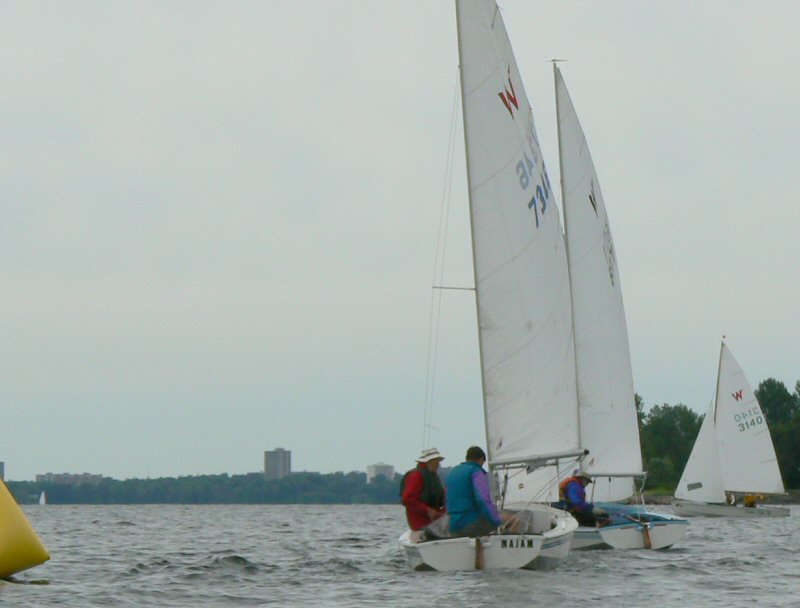 |
| ... perfect time for crew,
Tim, to help with the mainsheet. Robin appears to be reacting to Alan's
move to the inside by oversheeting his main which won't help in the
long haul. ... |
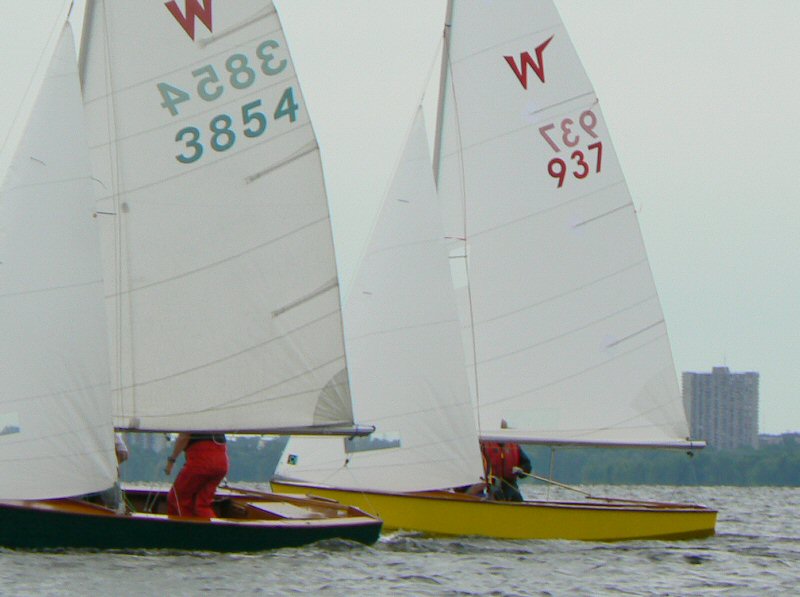 |
| Very near the windward mark:
Marc (3854) decides he'll risk underlaying the mark by tacking inside
Bill (937) instead of crossing Bill's transom and then tacking. With no
other boats right behind Bill, Marc can always tack again if necessary. ... |
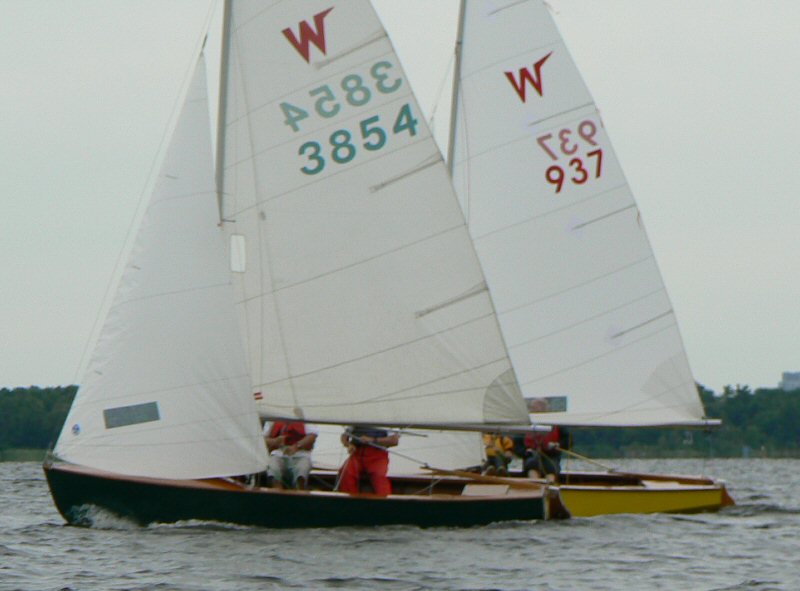 |
|
A tack is nicely completed -
outside the
Two-Length Zone, we feel - but there is
the matter of the mark
which we are short of laying by a boatlength. Marc warns Al that we'll
try to "shoot" the mark. He keeps up full speed instead of yielding to
the temptation to pinch too soon which might let Bill take our wind, and of course, we want full speed
when it comes time to luff
up and around the mark. At the last
second ...
... |
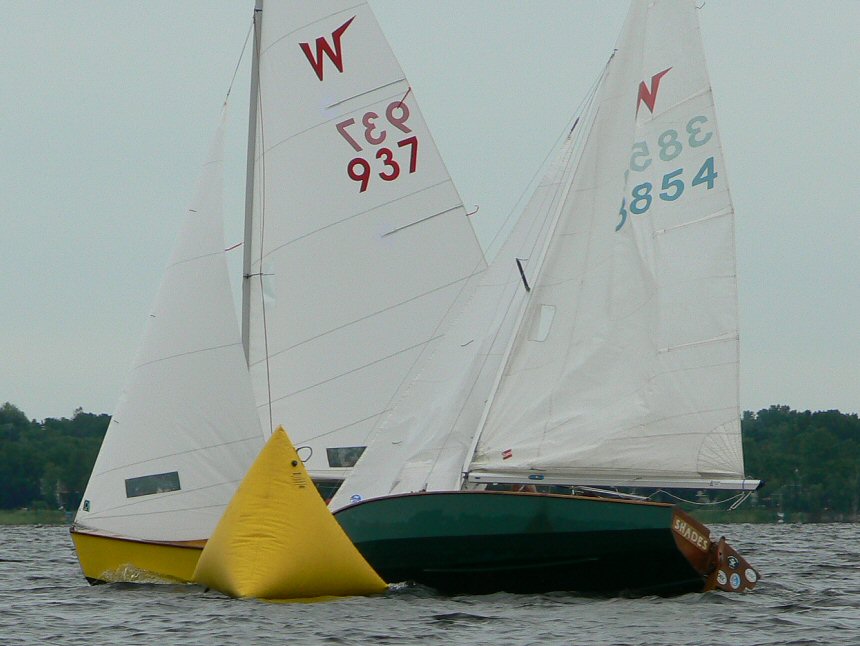 |
| ... Marc luffs sharply. Note
that Al has eased his jib so that it won't back and make us want to
tack or slow us down. ... |
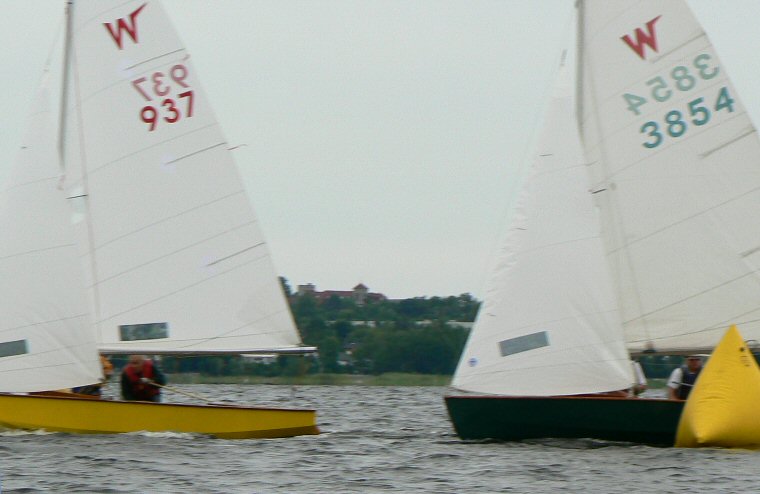 |
| Success!! ... |
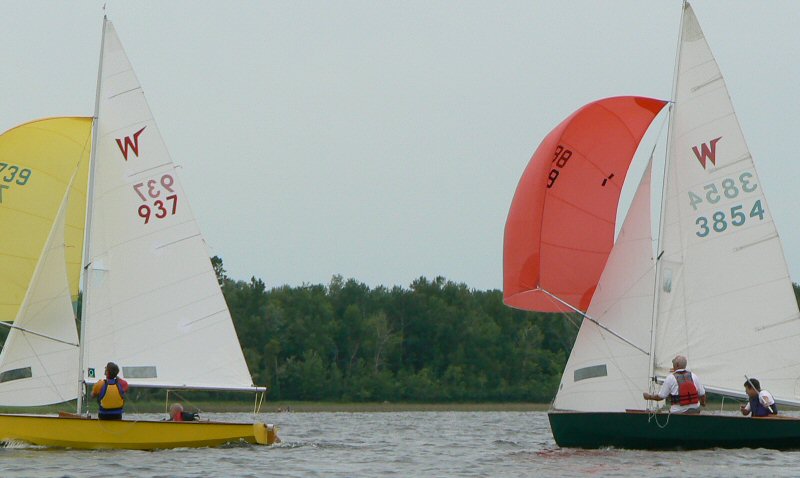 |
| A tough leg on which to try to
pass anyone, so Marc and Al (3854) will be content to stay close and to
maintain a good attacking
position for the upcoming beat. ... |
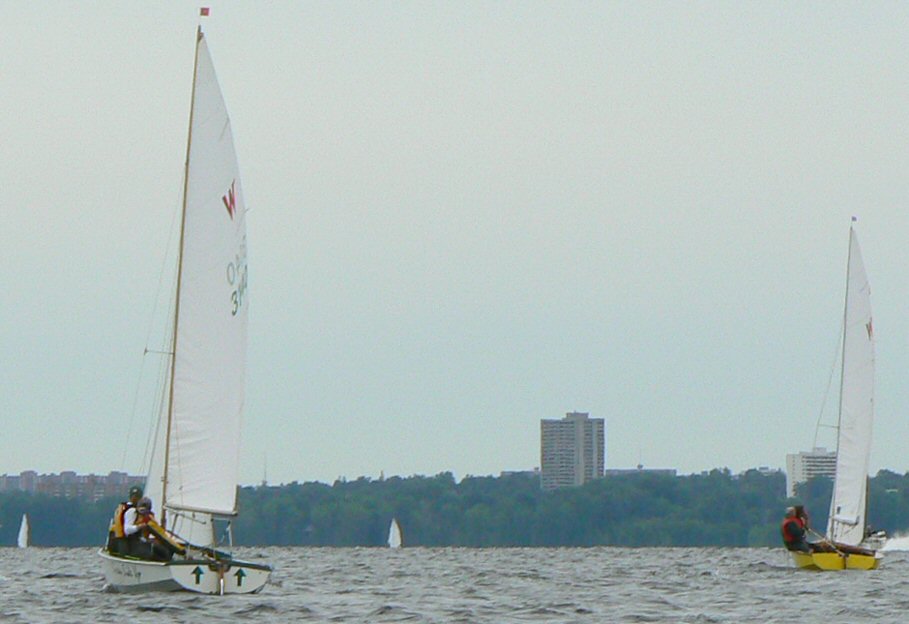 |
| When Bill (r) sees Lori
(and the others who have just rounded) getting this lift, he should
tack across until he gets the same slant and then tack back. Unless of
course there are overriding wind strength considerations! ... |
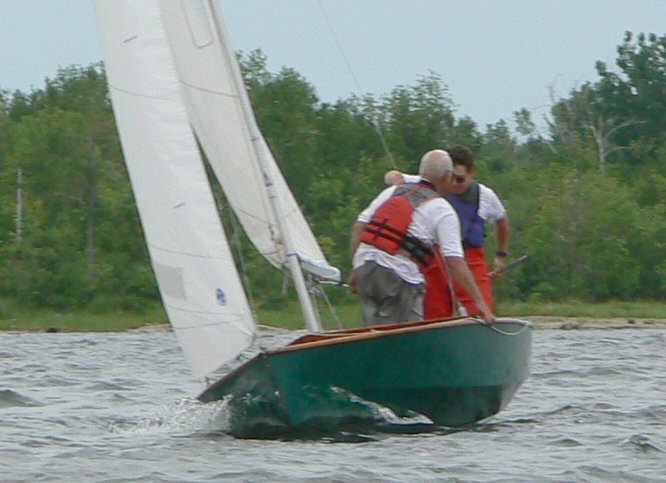 |
| After
tacking away from second-place Bill to catch an oscillation favouring
starboard tack, Marc and Al complete a roll tack back to port in the
return shift. It's only the second beat and too early to blindly cover
Bill. ... |
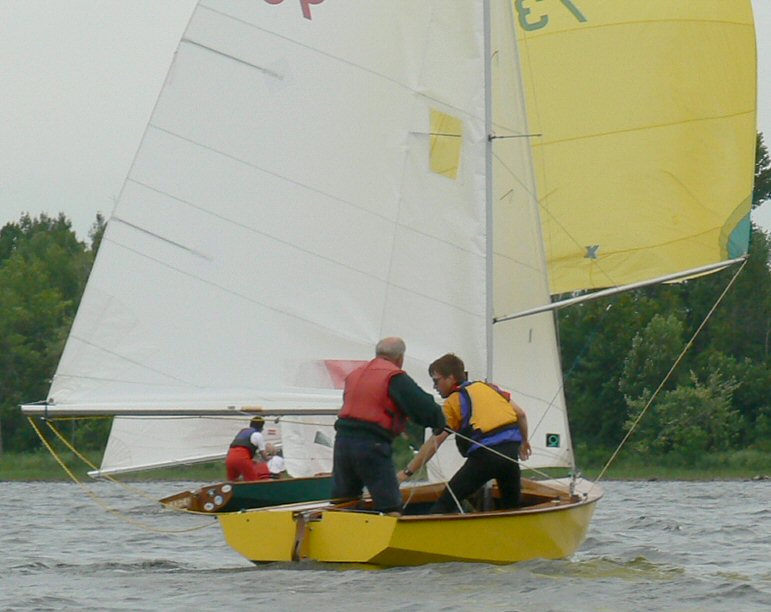 |
|
Defending
the left which
gives him starboard
if the boats ever converge, and inside position at the leeward mark,
Marc has waited for Bill to gybe before doing likewise. Inside position
at
the upcoming mark will be much more important than last time, since
after this rounding, there will be only a very short beat to the finish.
... |
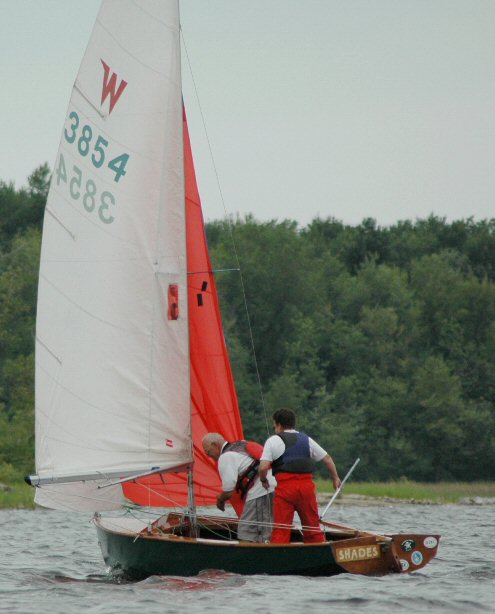 |
| Marc kindly orders an ... ... |
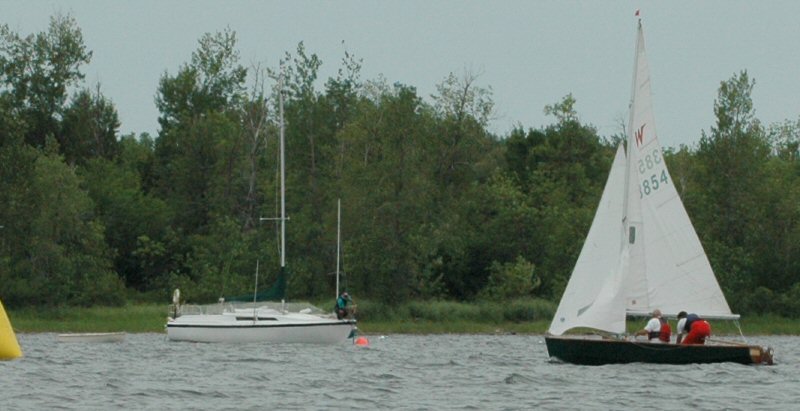 |
|
... early douse so
that poor old Uncle Al - who has turned
65 just a week before - will not have to rush. This is another example
of the Stuart Walker dictum, "Spend your lead", being put into
practice. The early douse may give away a few feet to Bill, but is a
great insurance policy against the major loss potential inherent in a
rushed douse.
... |
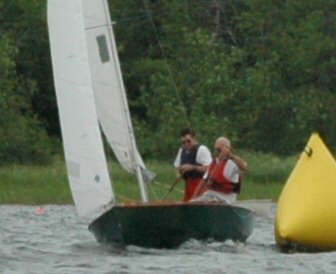 |
| A
scintillating rounding sees Al help by cranking the mainsheet in for
Marc. ... |
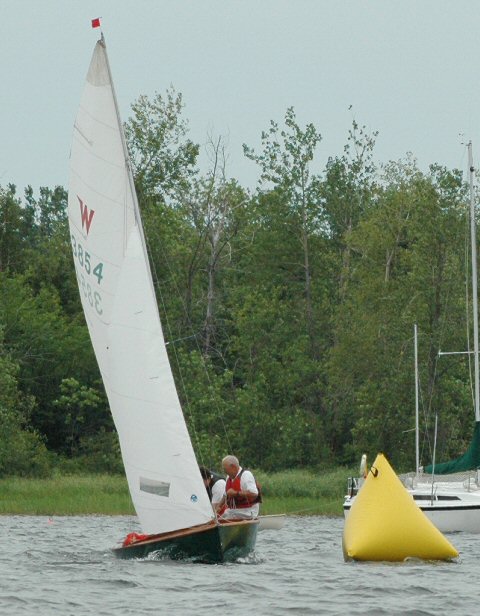 |
| Note how Al did not get
carried away with the
rapid hand-over-hand mainsheet trim and has left a bit of twist in the
main to make sure we get up to max upwind speed before we crank in a
bit more. ... |
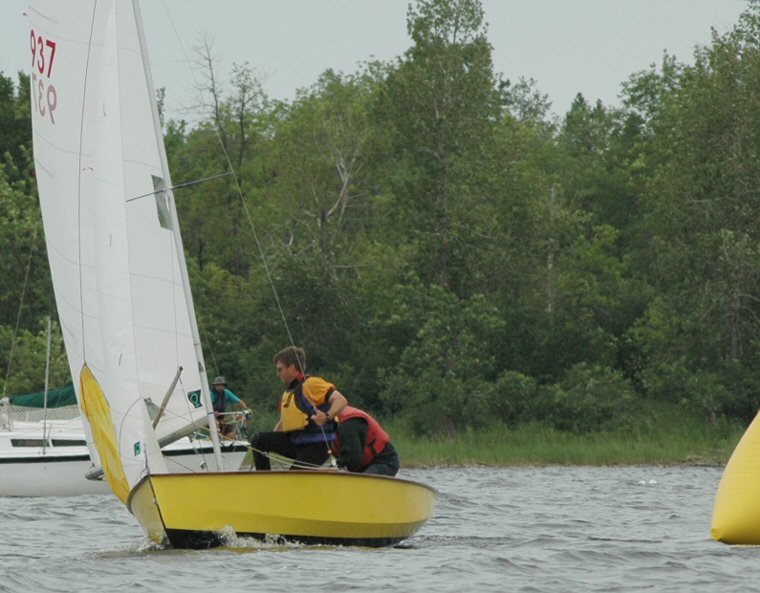 |
| A bit of excitement in Bill and Frank's rounding as they pulled out all the stops and left the douse to the last possible second - and perhaps even a bit later? |
| next Pearls page return to index |